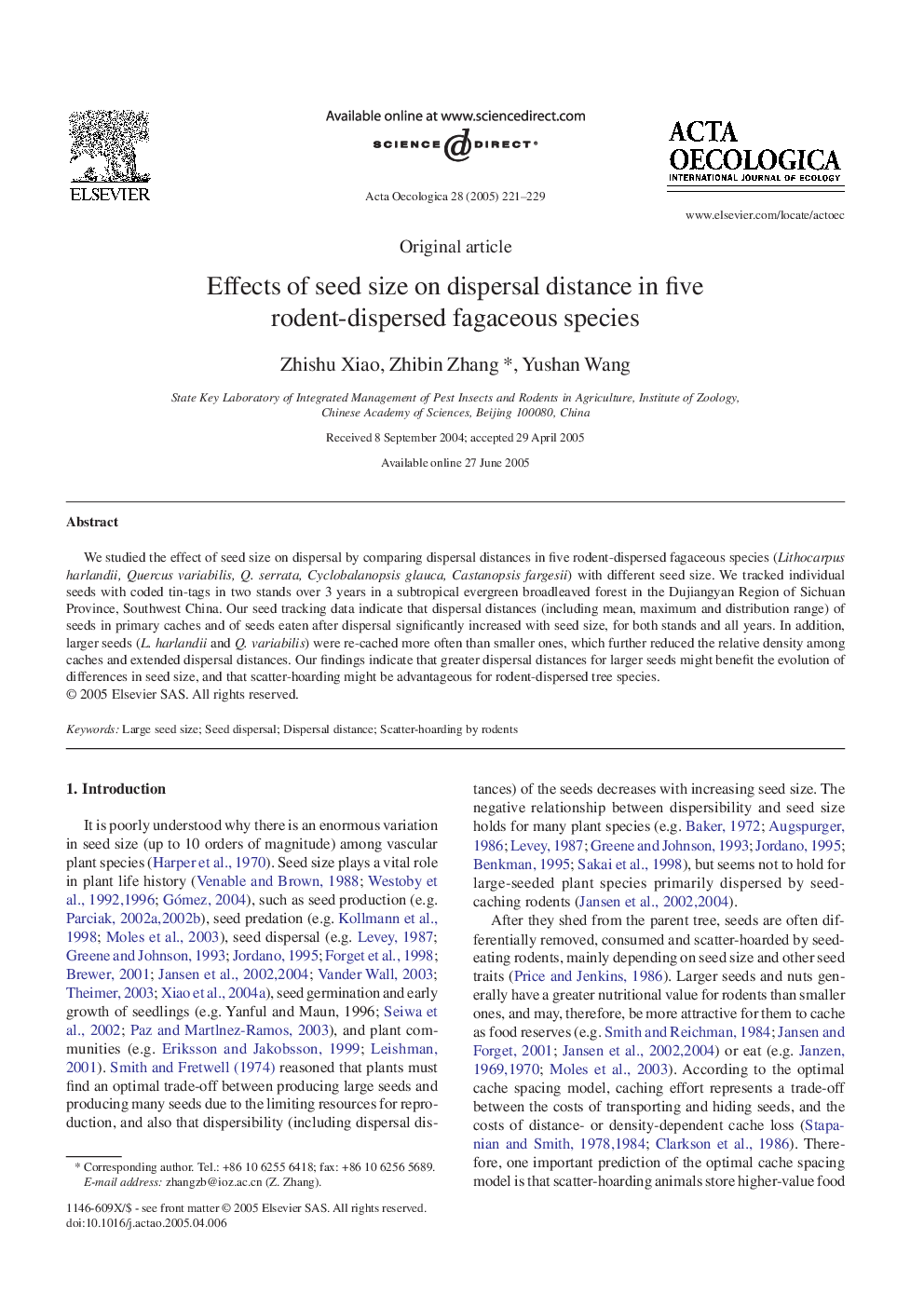| Article ID | Journal | Published Year | Pages | File Type |
|---|---|---|---|---|
| 9444960 | Acta Oecologica | 2005 | 9 Pages |
Abstract
We studied the effect of seed size on dispersal by comparing dispersal distances in five rodent-dispersed fagaceous species (Lithocarpus harlandii, Quercus variabilis, Q. serrata, Cyclobalanopsis glauca, Castanopsis fargesii) with different seed size. We tracked individual seeds with coded tin-tags in two stands over 3Â years in a subtropical evergreen broadleaved forest in the Dujiangyan Region of Sichuan Province, Southwest China. Our seed tracking data indicate that dispersal distances (including mean, maximum and distribution range) of seeds in primary caches and of seeds eaten after dispersal significantly increased with seed size, for both stands and all years. In addition, larger seeds (L. harlandii and Q. variabilis) were re-cached more often than smaller ones, which further reduced the relative density among caches and extended dispersal distances. Our findings indicate that greater dispersal distances for larger seeds might benefit the evolution of differences in seed size, and that scatter-hoarding might be advantageous for rodent-dispersed tree species.
Keywords
Related Topics
Life Sciences
Agricultural and Biological Sciences
Ecology, Evolution, Behavior and Systematics
Authors
Zhishu Xiao, Zhibin Zhang, Yushan Wang,
